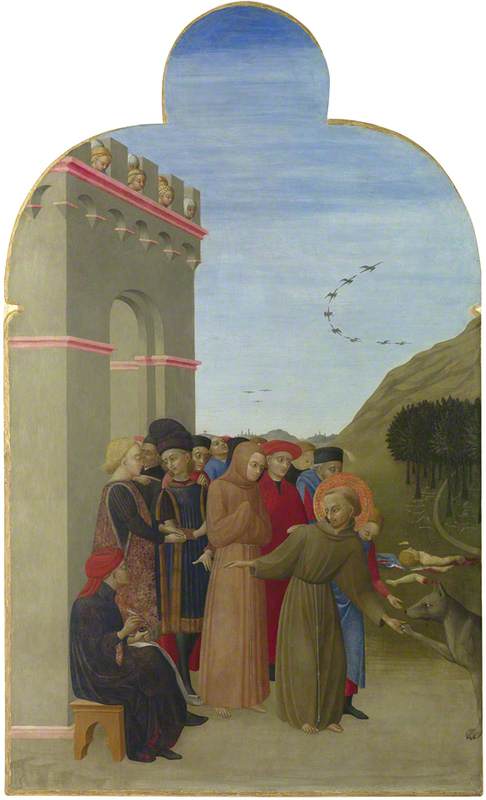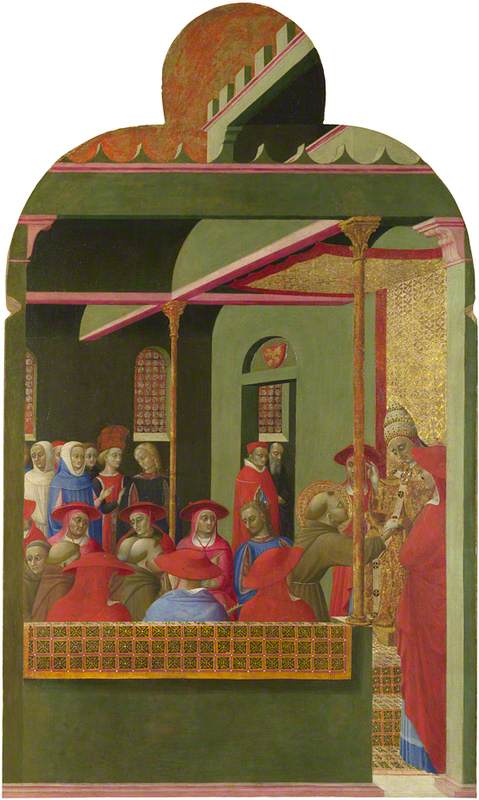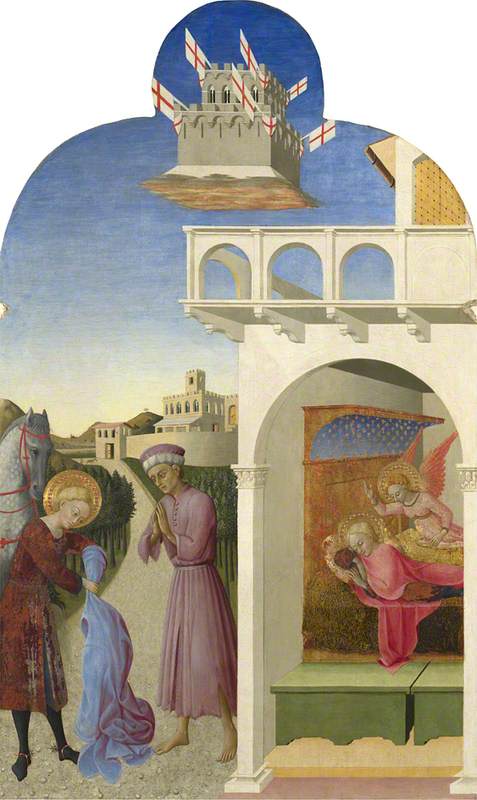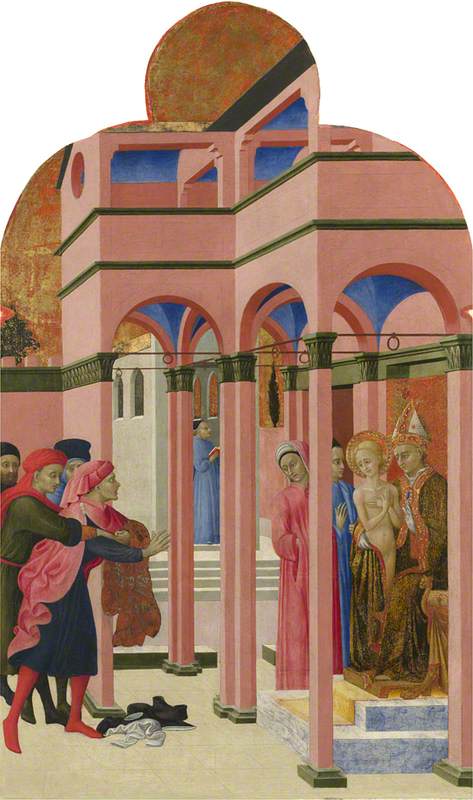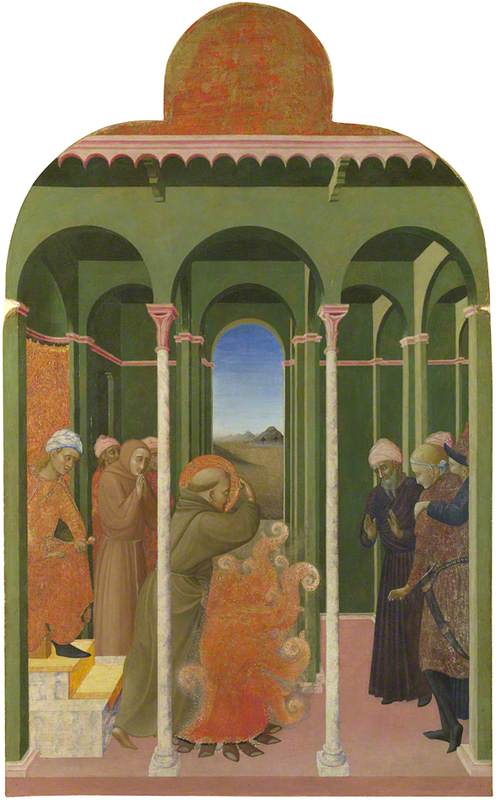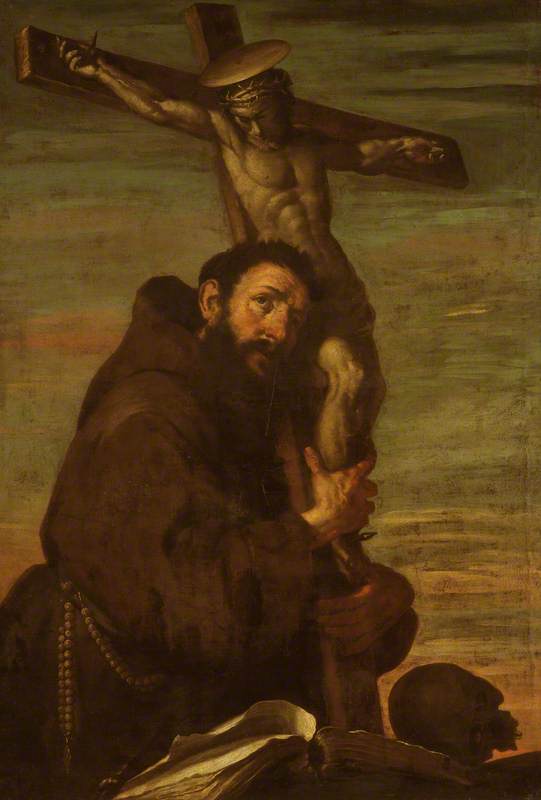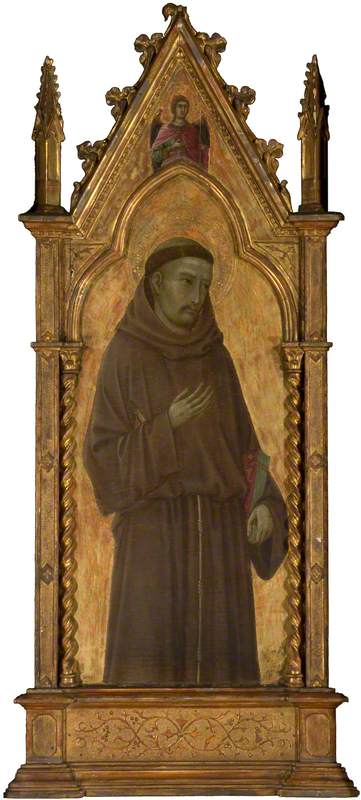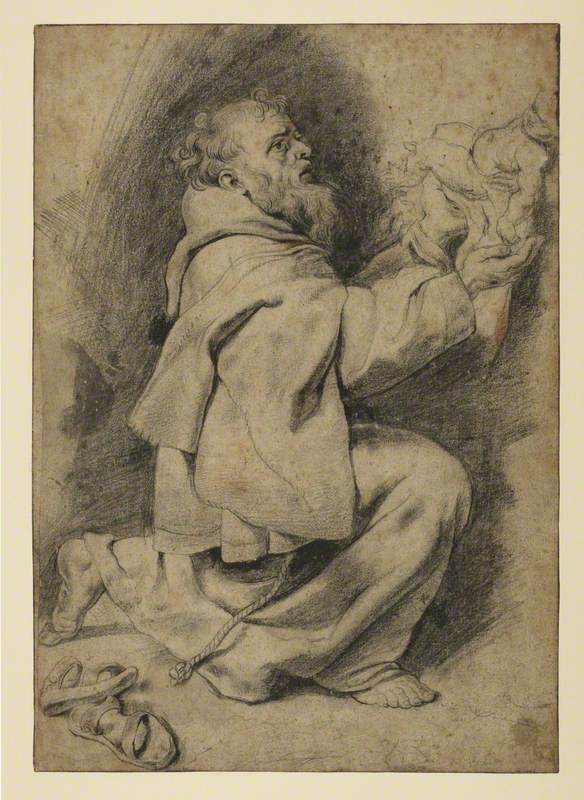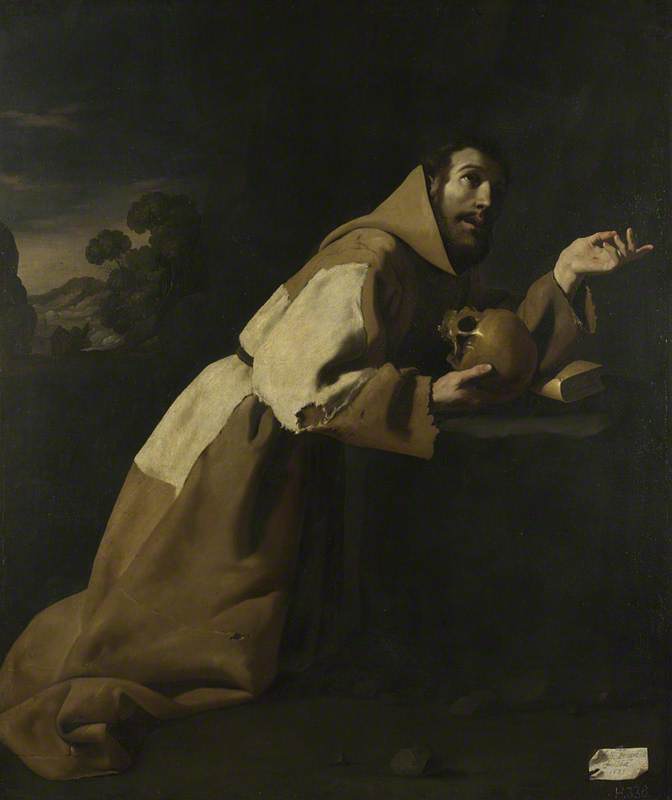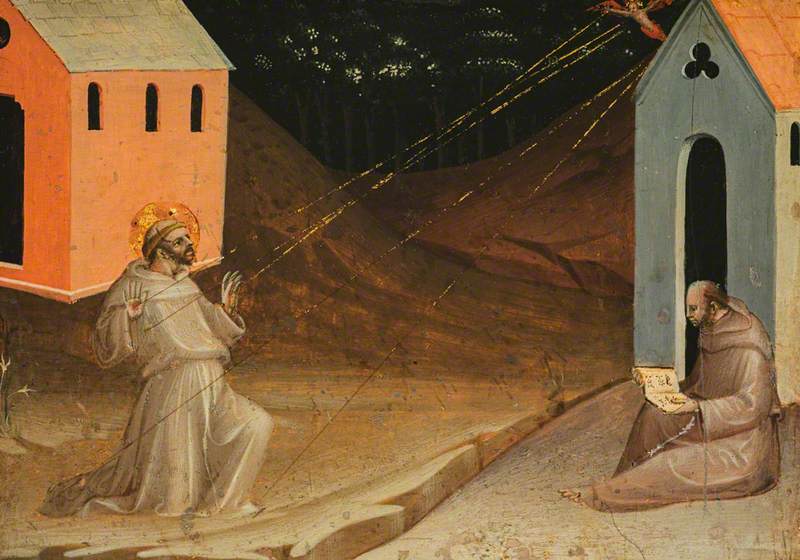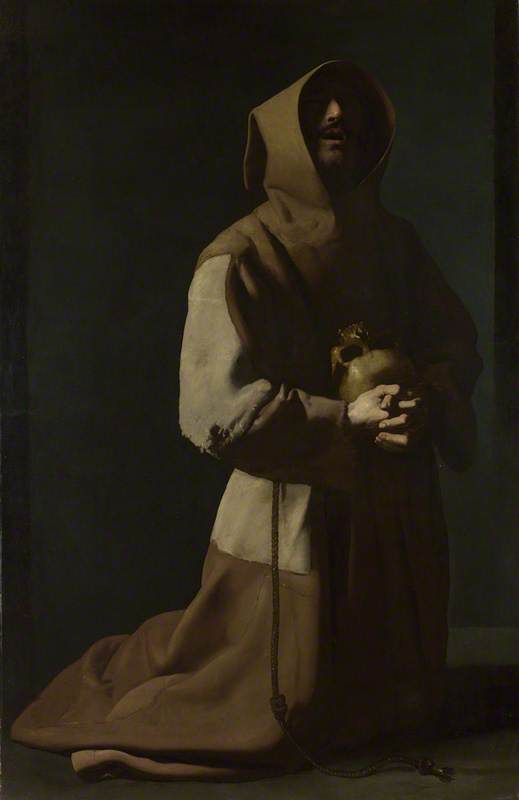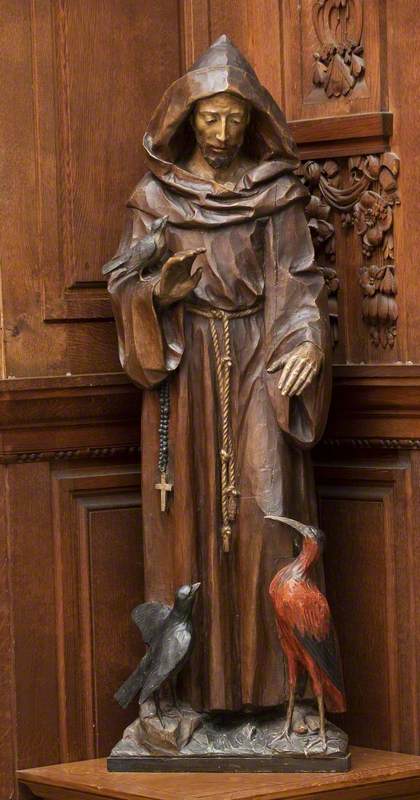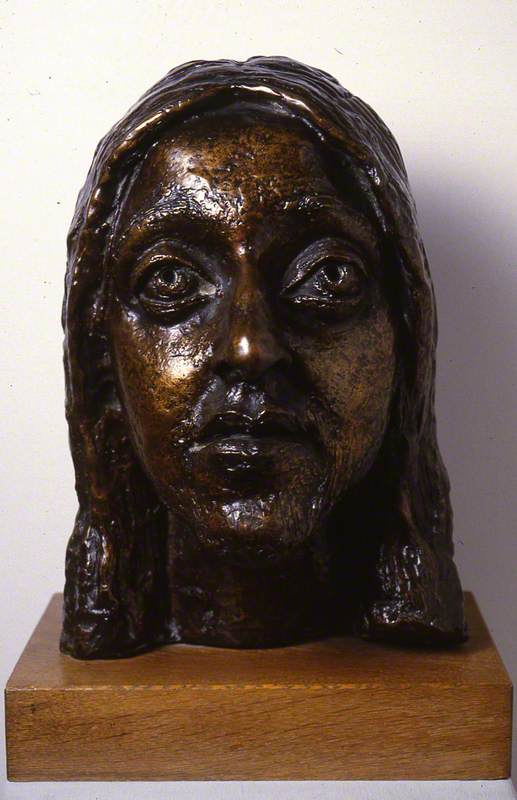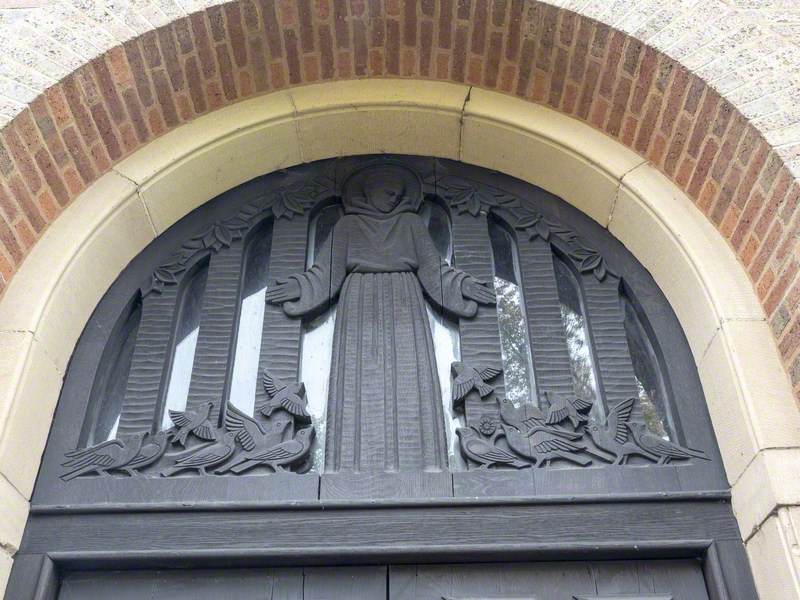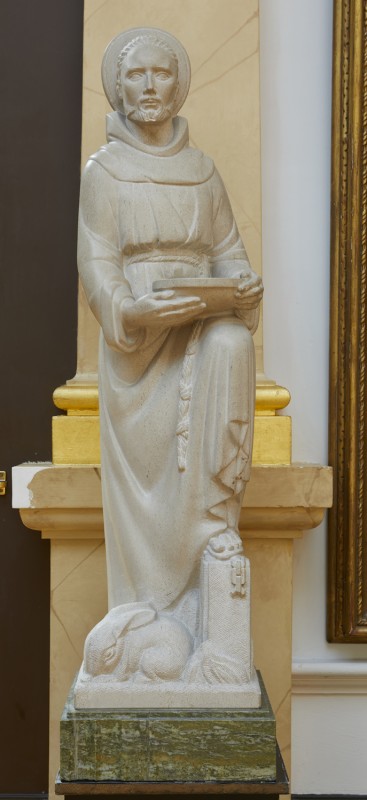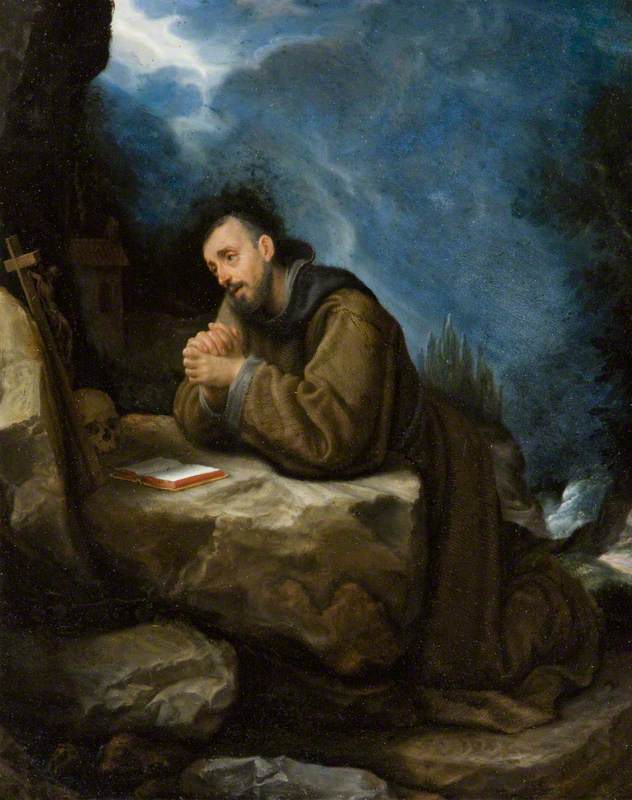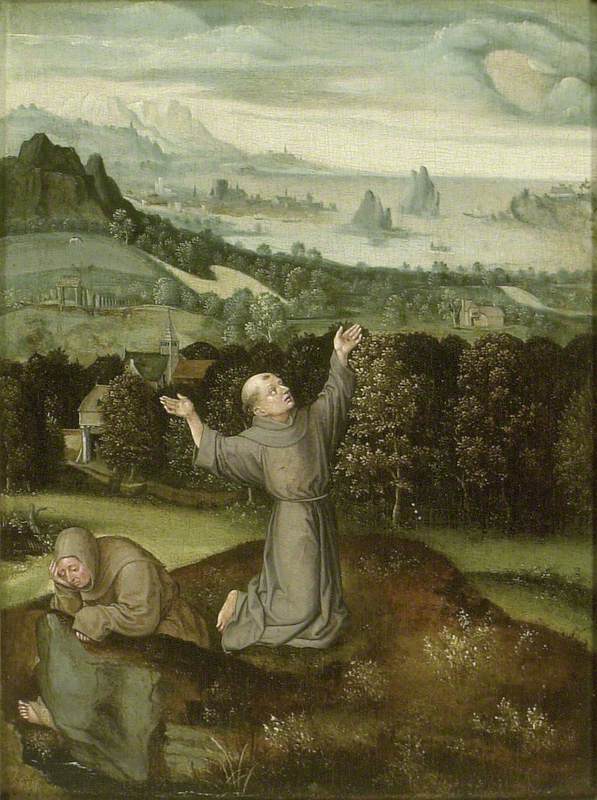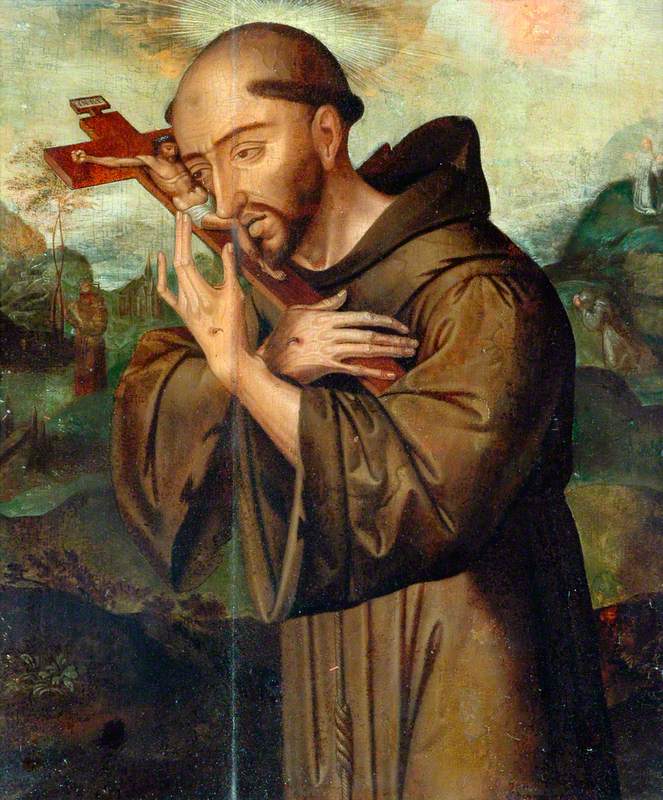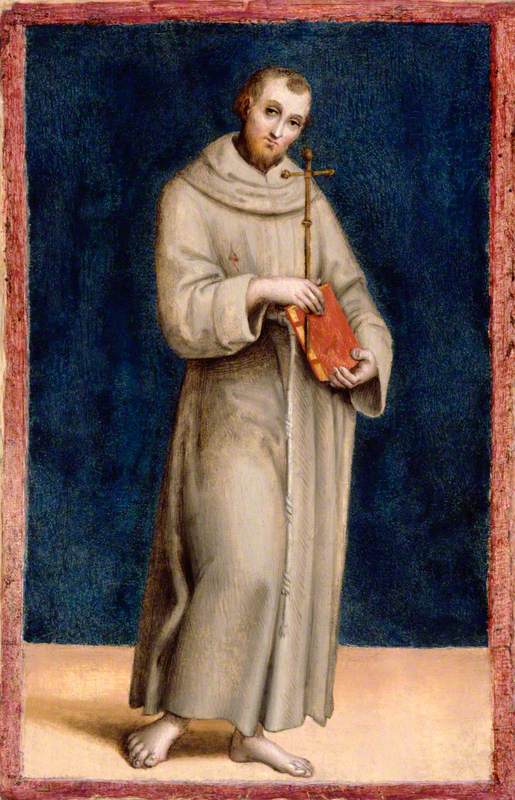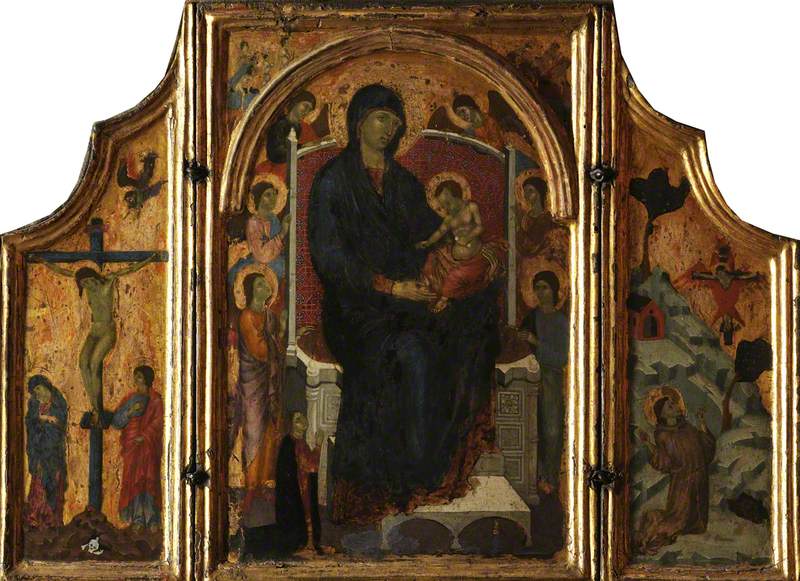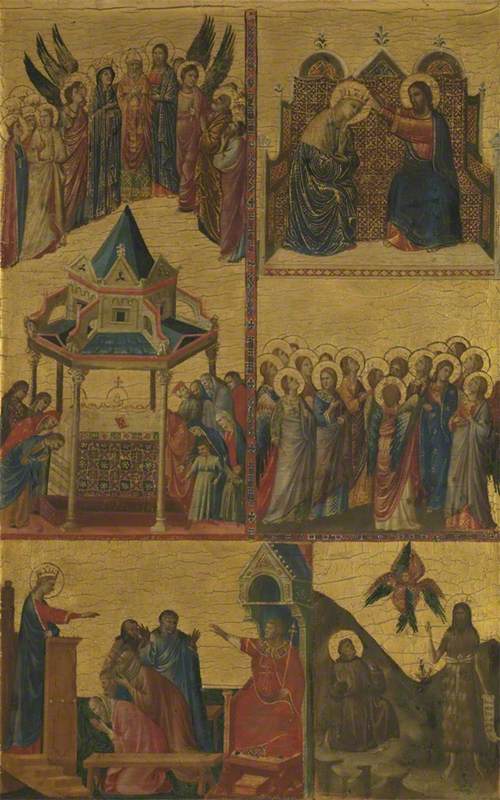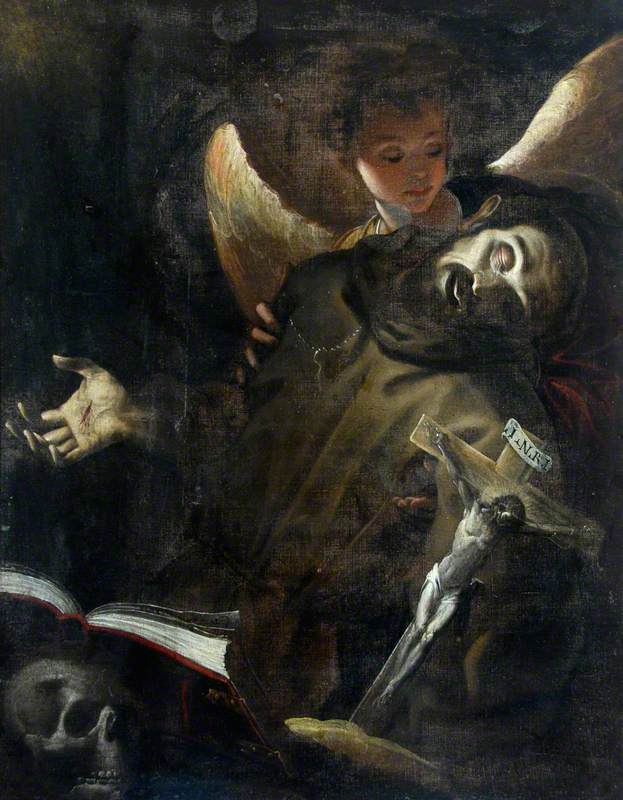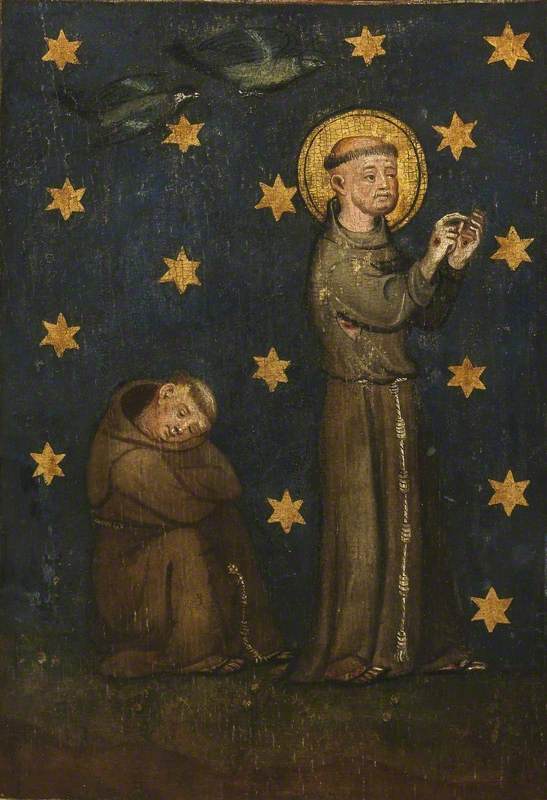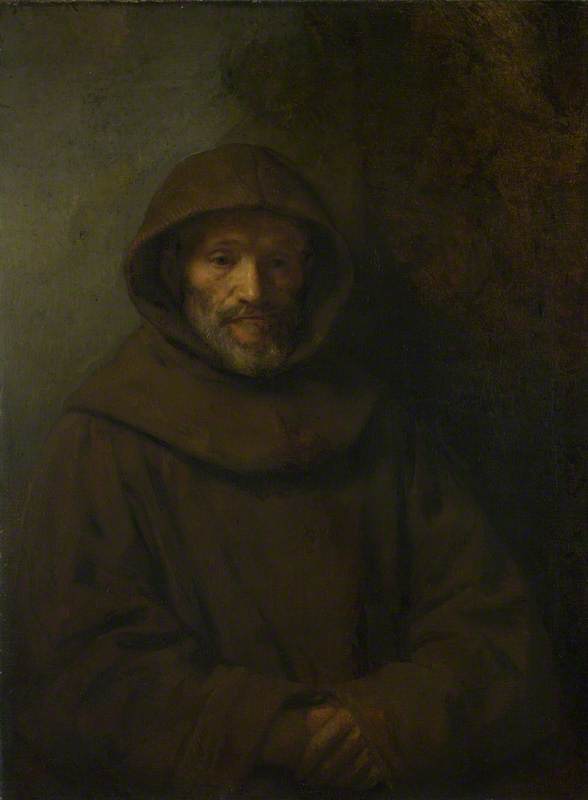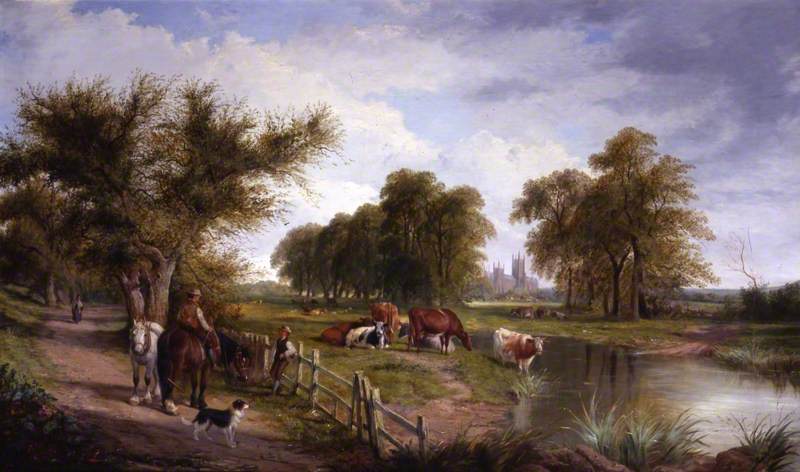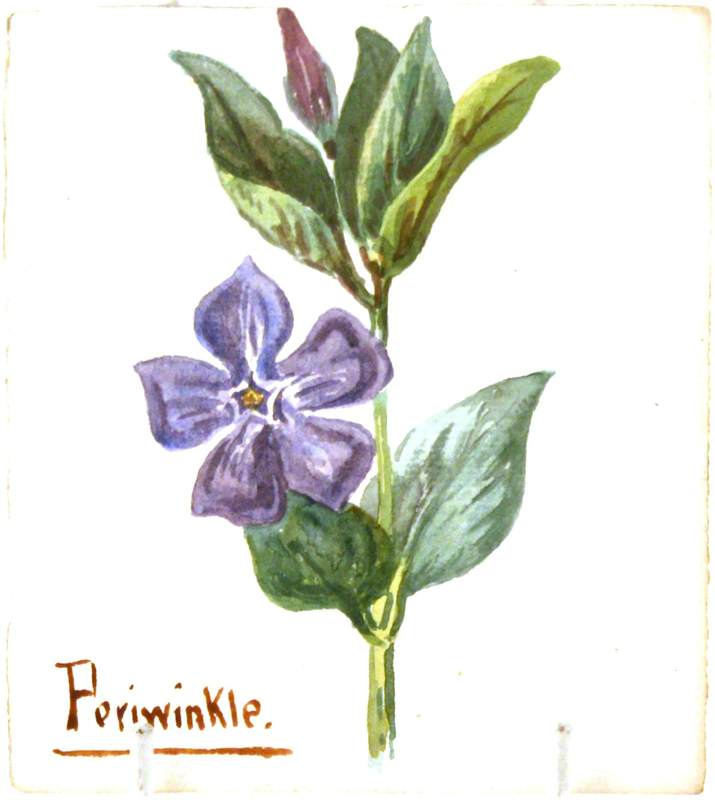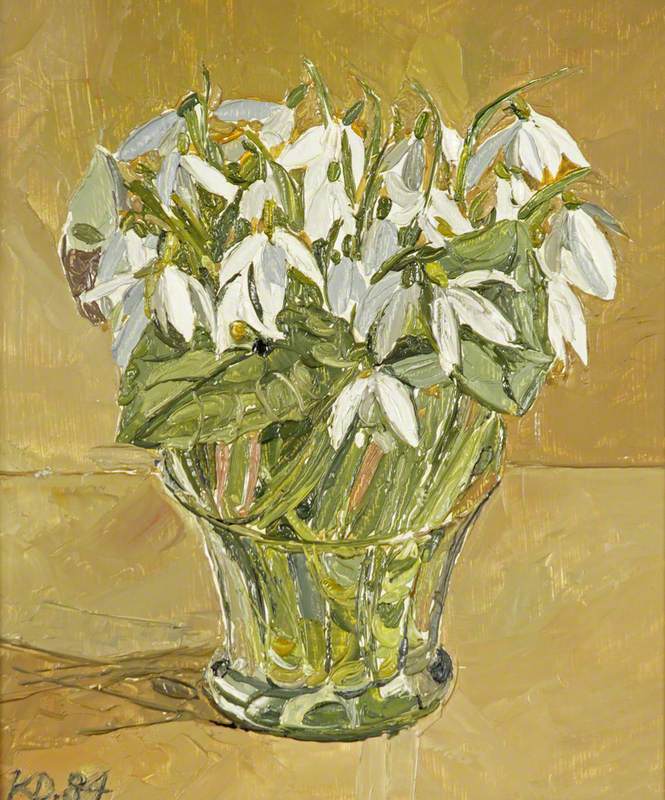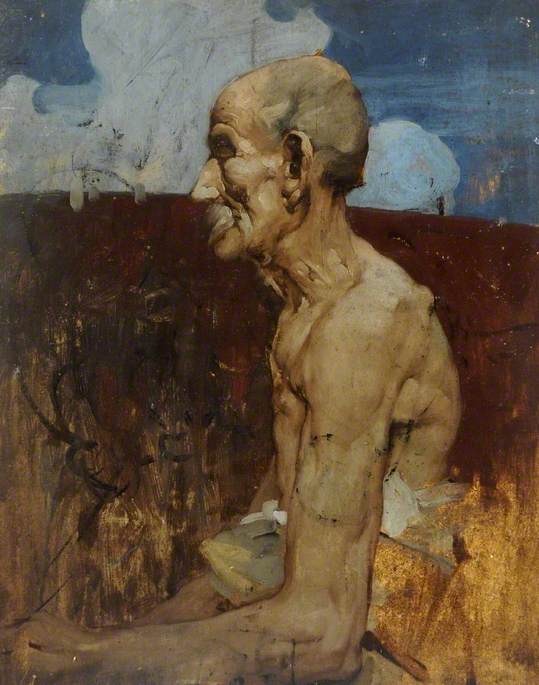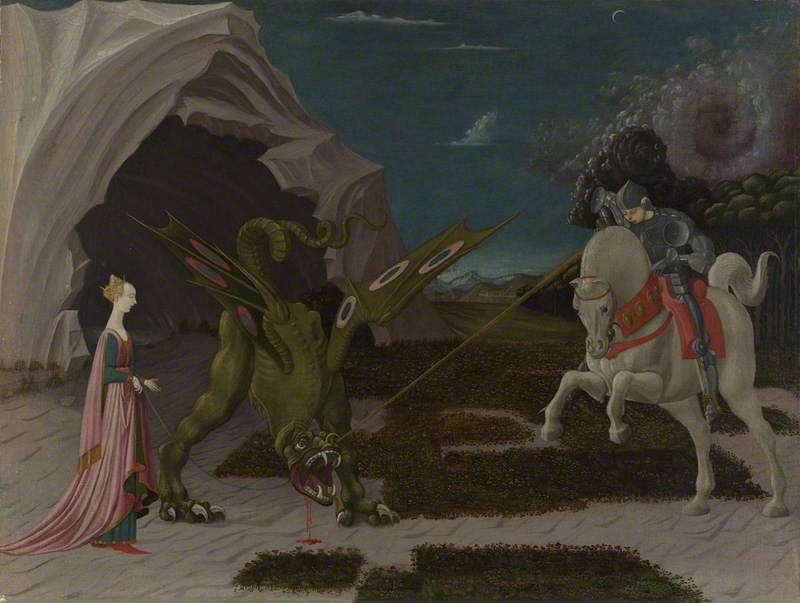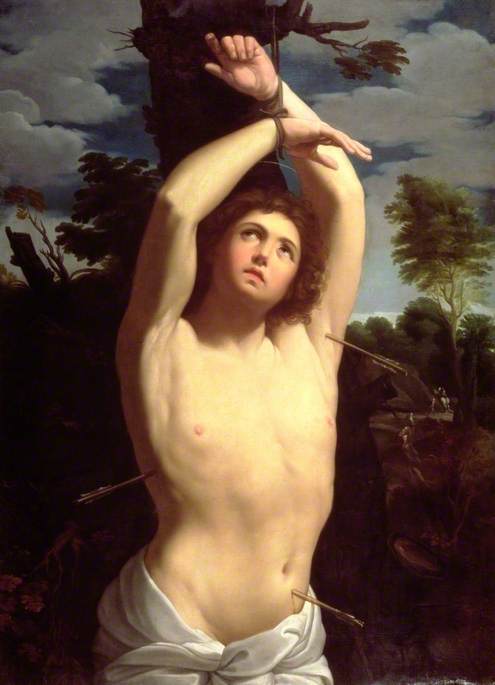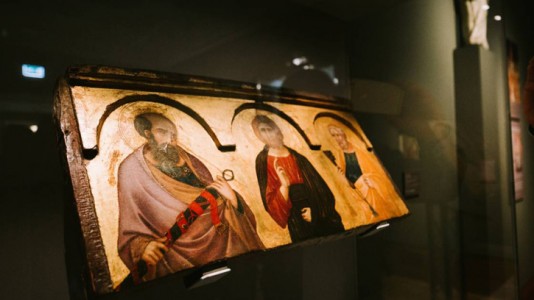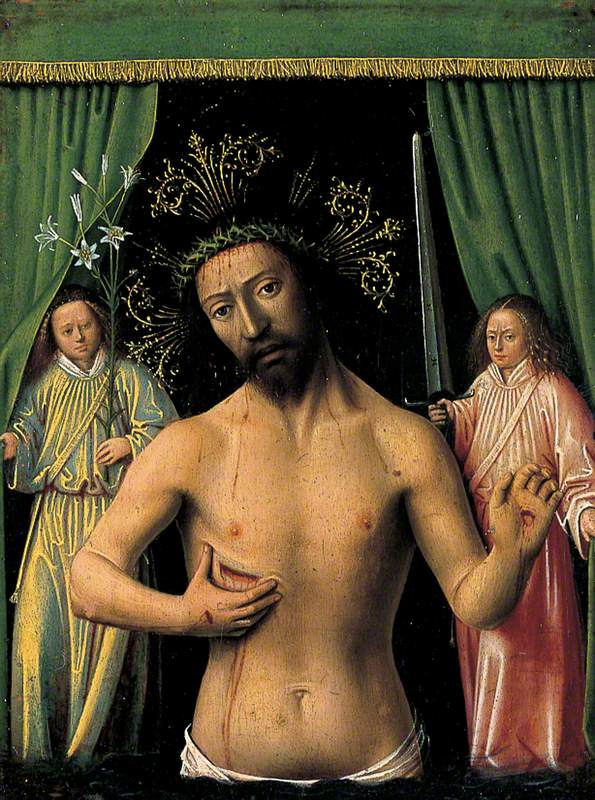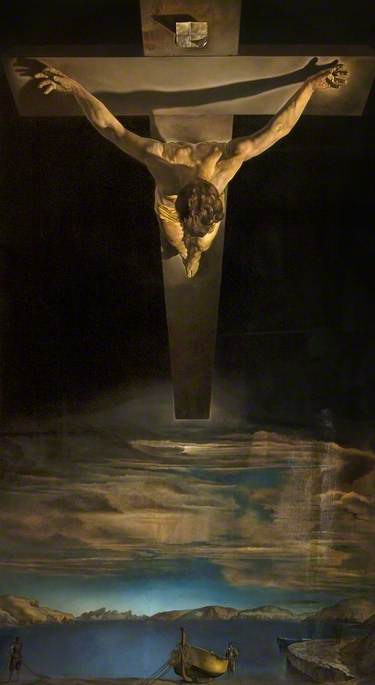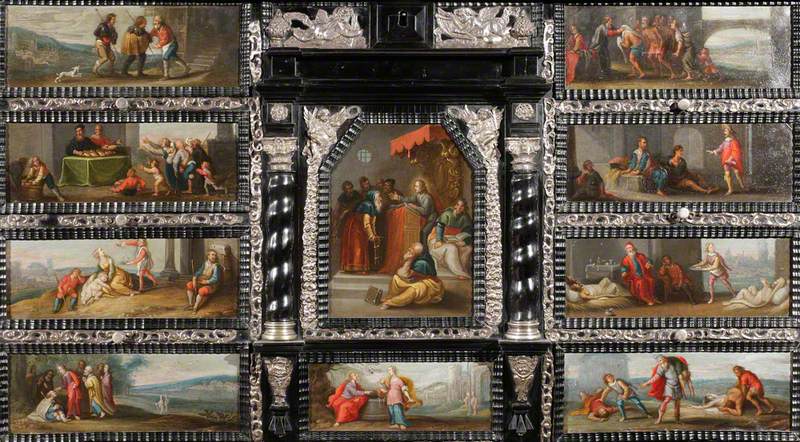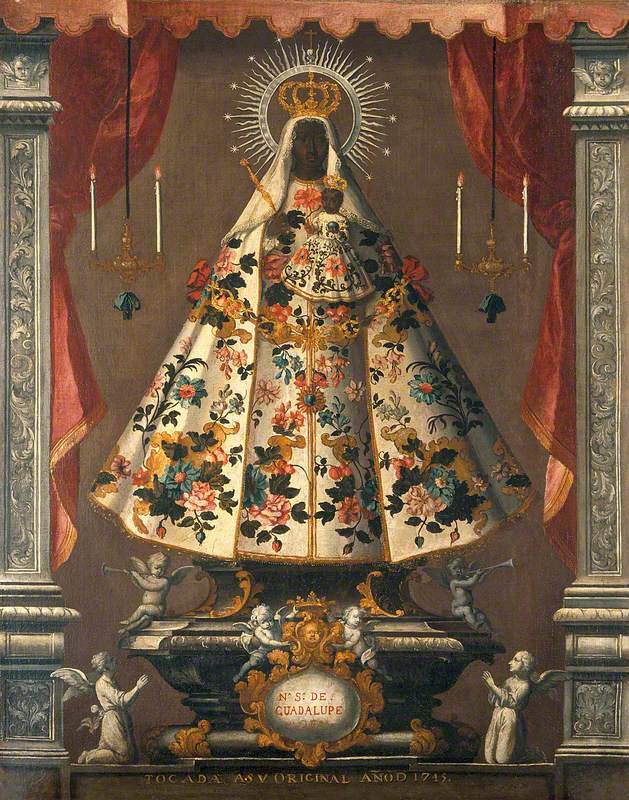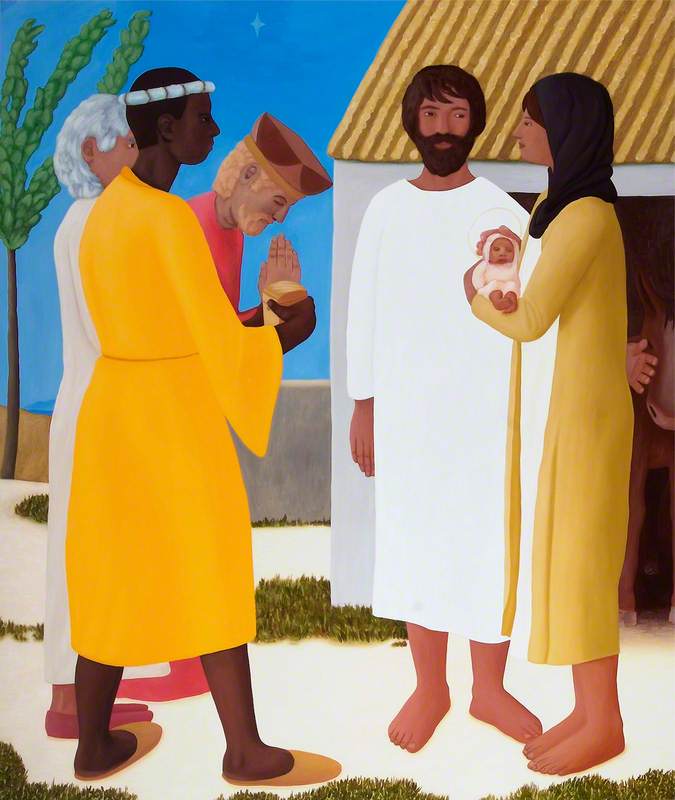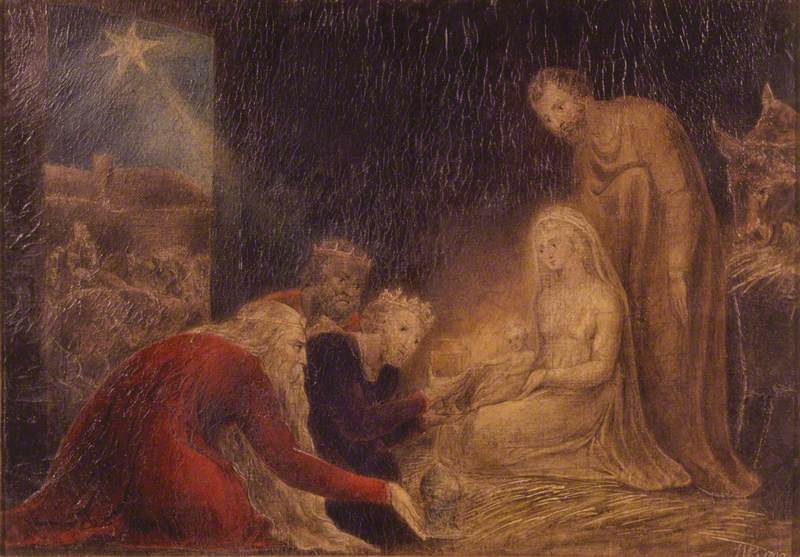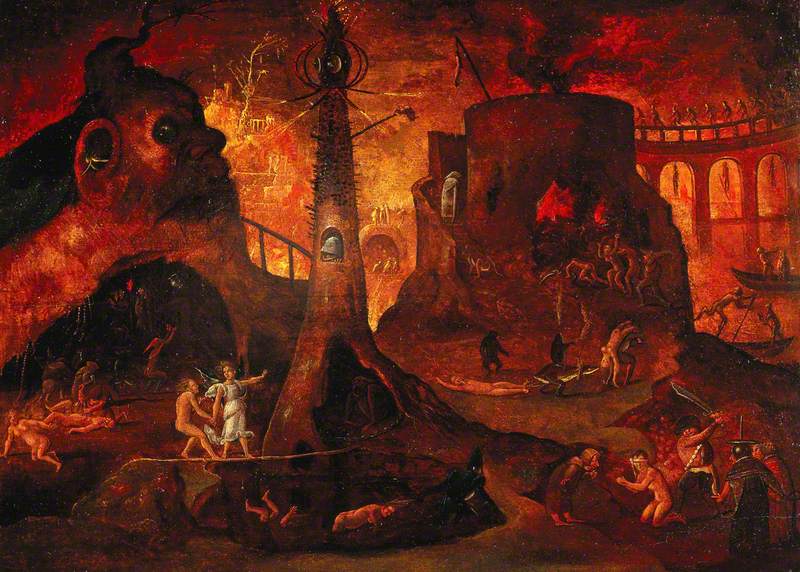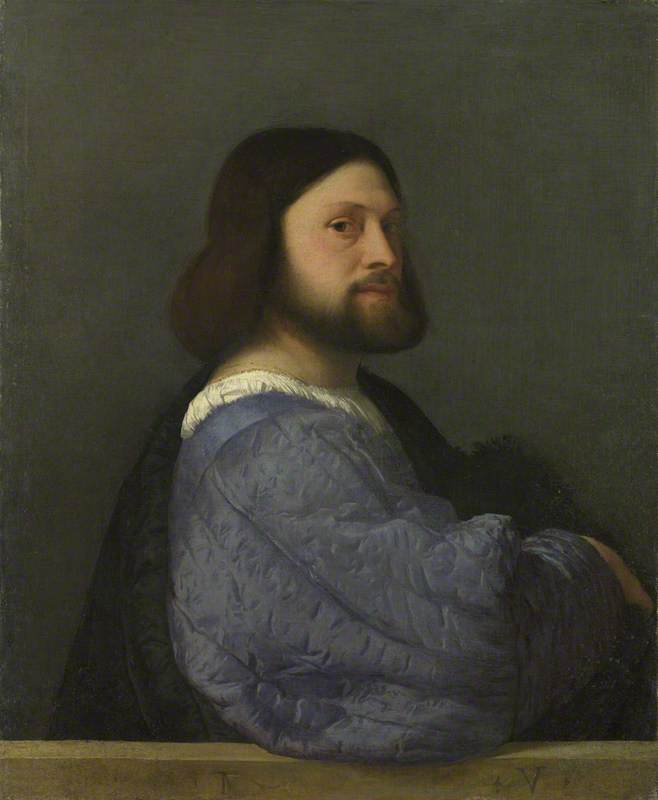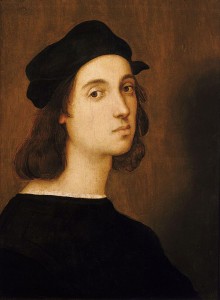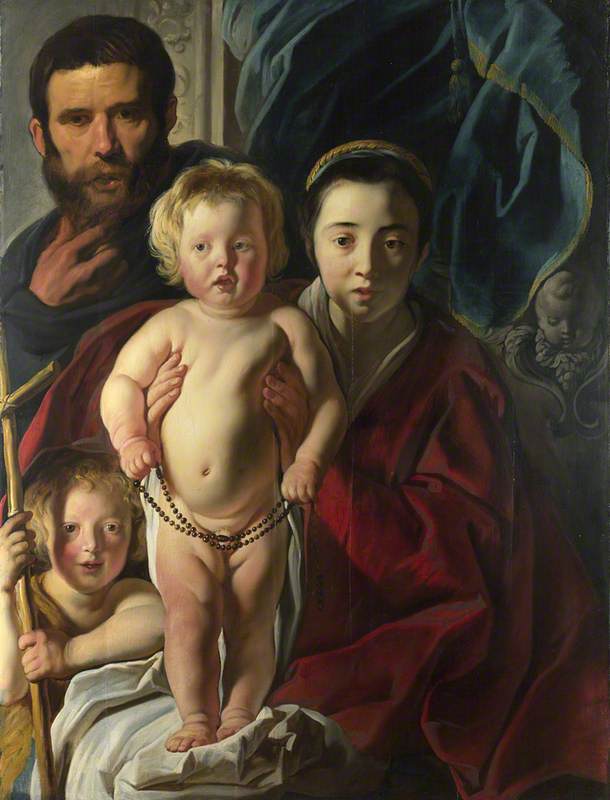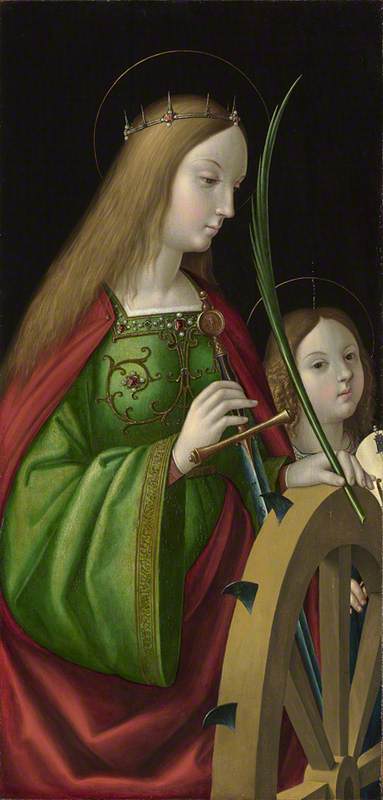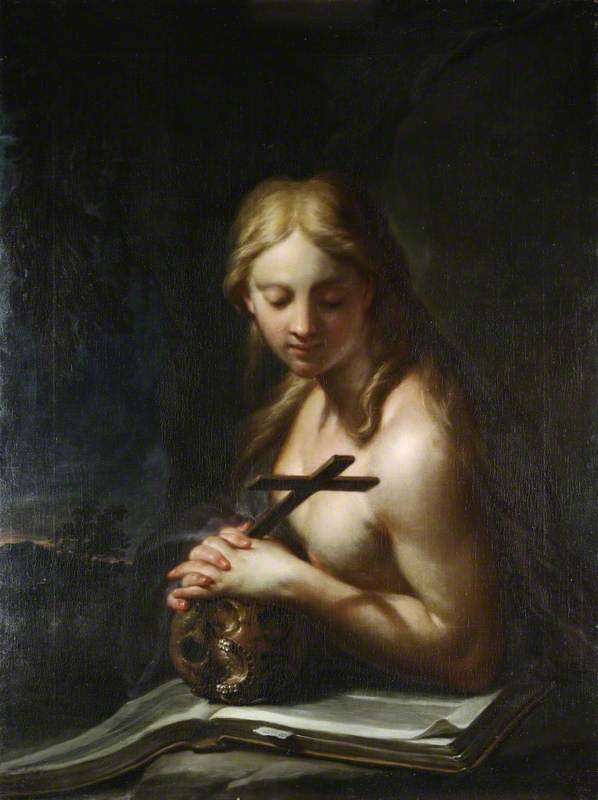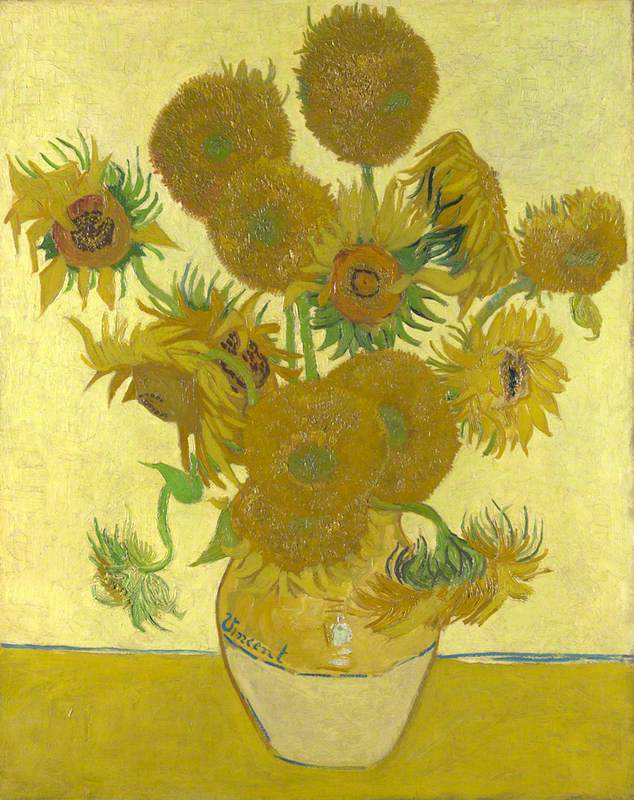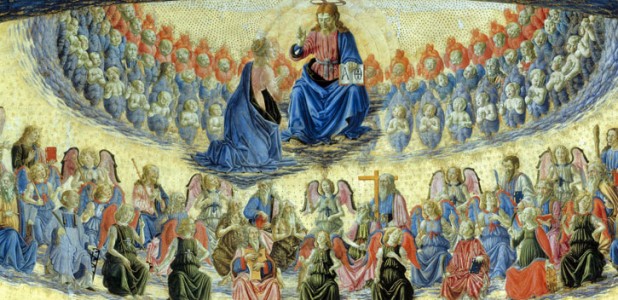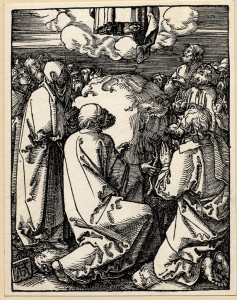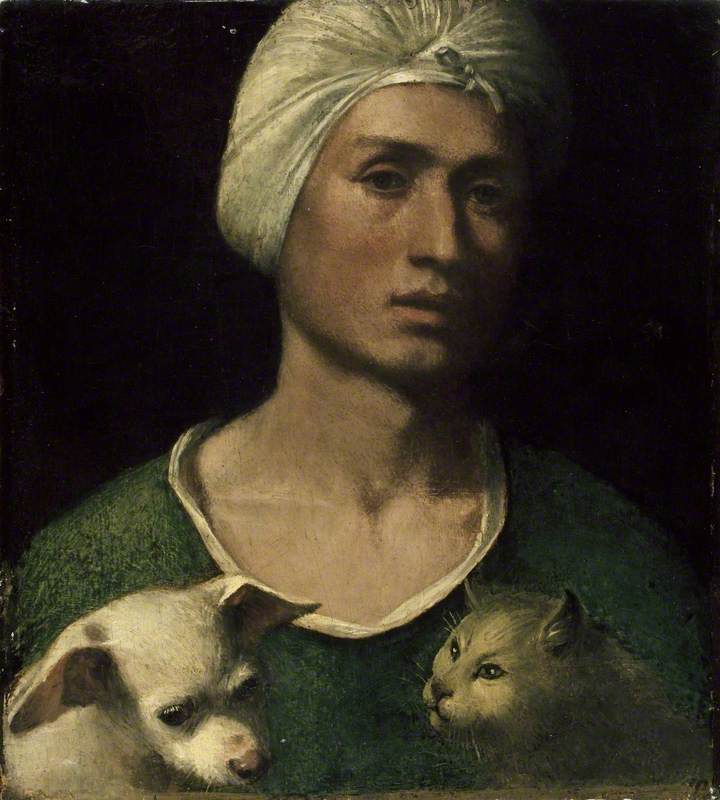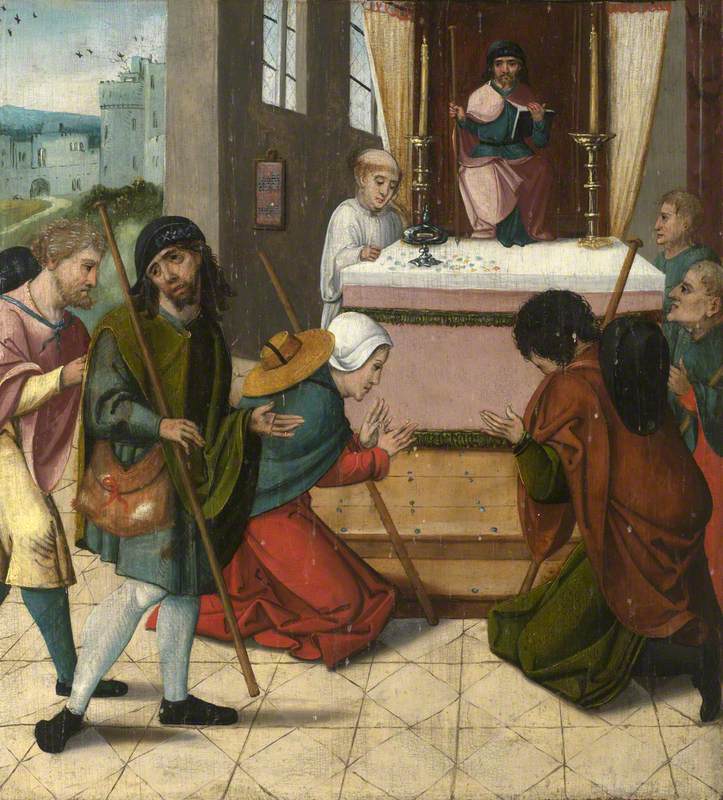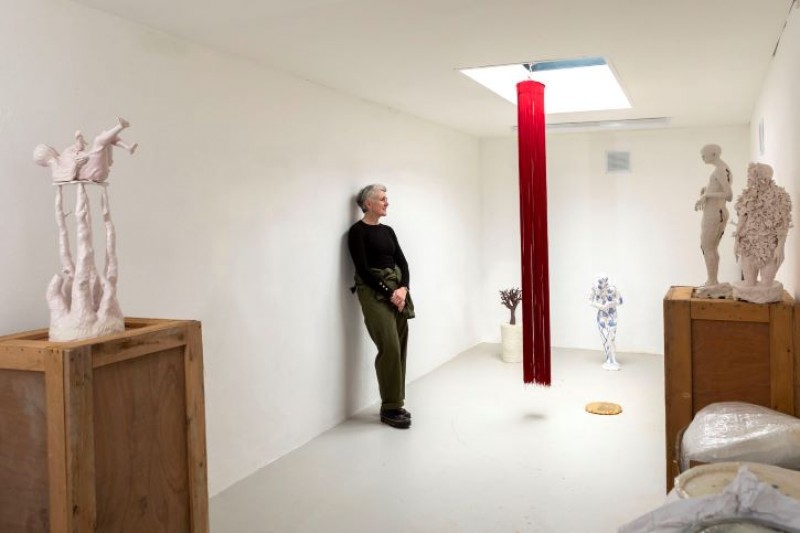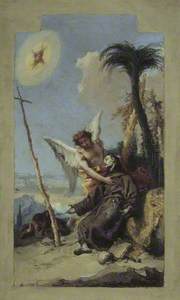4th October is the feast day of Saint Francis of Assisi, the patron saint of animals, peace and Italy.
Saint Francis of Assisi Holding a Bird
mid-20th C
unknown artist 
It is the easiest of these three subjects to represent in artistic terms, that of Saint Francis with animals, that has come to dominate modern-day artistic impressions of this man.
Saint Francis Preaching to the Birds
1930
John Mansbridge (1901–1981) 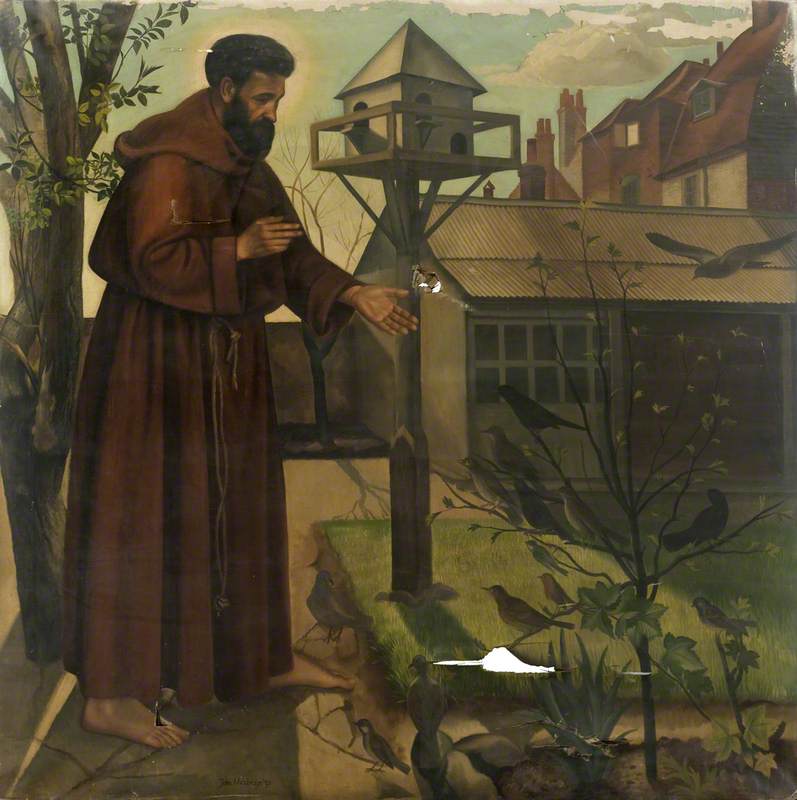
However, the early depictions in art celebrating Saint Francis often focus on his suffering which is represented by the receiving of the stigmata – the representations of the wounds of Christ on the body.
The depictions of Saint Francis and his receiving of the stigmata embody the power of faith and of suffering for this. The current fashion of depicting the saint always with animals tends to downplay his suffering, which went with his enforced poverty.
Francis of Assisi (1186–1226) was the son of a wealthy merchant, but early in his life he had earned a reputation for caring for lepers and the poor. He was seriously ill after being captured in a dispute between Assisi and Perugia and held prisoner for a year. He turned his back on the conflict and was accused of cowardice. He visited the semi-derelict church of San Damiano of Assisi and from the crucifix displayed in this humble church a voice spoke to him which stated: 'Go and repair my house, which is falling down.'
This led to Francis revoking all his wealth, inheritance and even his clothes and putting all his money into the Church. It was the bishop of Assisi who clothed Francis in simple clothes and so his new life began.
Francis would beg for money for the church, preach and travelled as a pilgrim, often with the outcasts of medieval society including lepers whom he tended where others shunned.
This triptych by an artist known as the Master of Città di Castello was painted in around 1300. This was only a few decades after Francis died in 1226.
On the right-hand side, a figure kneels and one hand can clearly be seen exhibiting the stigmata. Another painting of Francis from around the same time is that by Giovanni da Rimini.
On the bottom right of this panel can again be seen a figure kneeling, there is a similar facial likeness between this and the previous figure and once again Francis is receiving the mark of Christ. In this depiction he is pictured alongside John the Baptist.
The receiving of the stigmata captured the artistic imagination. But by all accounts the marks of the stigmata were not found on Francis's body until after his death, making them even more miraculous and highlighting even more the humility of the saint. The marks were seen as proof of faith and purity.
The discovery of the stigmata after his death has also been captured in art. This depiction is by Sassetta, and is one of eight scenes from the life of Saint Francis made for the back of the double-sided San Sepolcro Altarpiece.
The Funeral of Saint Francis and Verification of the Stigmata
1437-44
Sassetta (1395–1450) 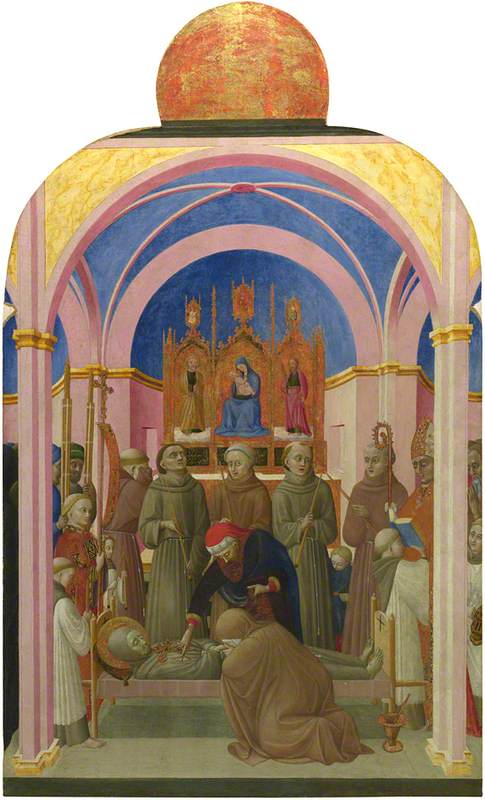
Seven of the scenes are in The National Gallery and you can see the rest of those at the top of this piece.
Artistic representations of Saint Francis receiving the wounds of Christ seem to vary showing him either as puzzled or as ecstatic with pleasure.
Saint Francis Receiving the Stigmata
Giovanni Battista Cima da Conegliano (c.1459–1517) 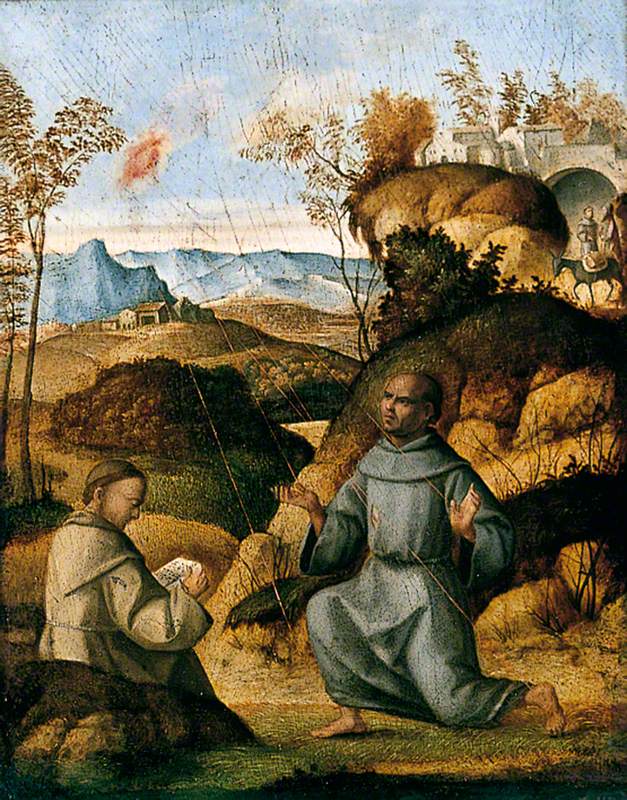
This very realistic image of death by Giovanni Battista Crespi appears to show him as a man who has died in pleasure and is about to be resurrected.
His head and neck mirror that of the figure of the crucifix in his hand. His face is deathly pale compared to the angel who holds him upright and the text he reads rests tellingly on a memento mori, in the form of a skull. In the act of receiving the stigmata, Francis the man has died.
Even here, in a beautiful representation by Botticelli, the iconography of stigmata is present.
Saint Francis of Assisi with Angels
about 1475-80
Sandro Botticelli (1444/1445–1510) 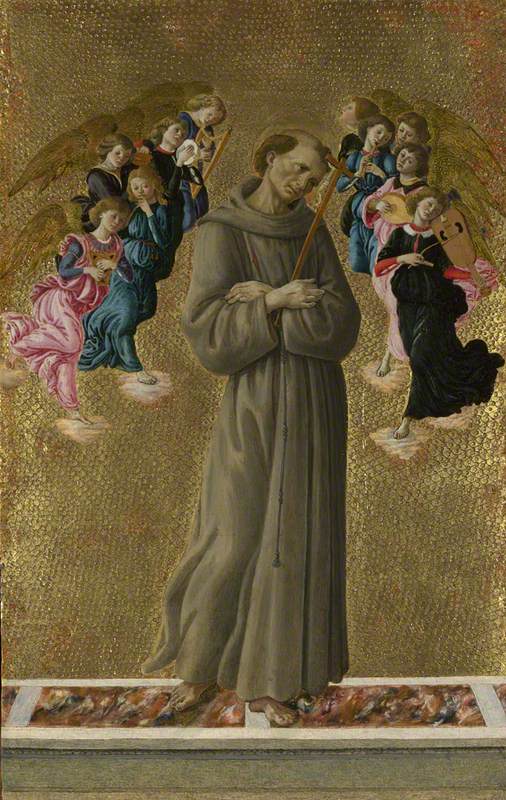
He is depicted as an older man and stigmata wounds can be viewed on his hands and feet and if you look more closely the small figure of Christ on the cross also bleeds.
Although many early images of Francis focus on his suffering, this image from a triptych depicting the Crucifixion shows him in a more familiar guise to us – preaching to the birds. I would also like to think that in this artwork he is also preaching to the stars. The look of serenity on the seated Franciscan friar is rather beautiful.
When Francis died in 1226 he was only 45 years old. He was canonised by Pope Gregory IX two years later. The saint had suffered many illnesses due to his wish to live a simple life and was blind when he died.
However, within a few years of Francis devoting his life to God, other like-minded men gathered around him. He founded the religious Order known today as Franciscans, and he eventually founded three separate Orders with different rules.
Saint Francis's teachings soon made their way to England. Two years before his death the first Franciscan friars arrived in Canterbury in Kent in 1224. The Canterbury house was built from 1267 in stone to allow a more permanent base to grow the Order.
The friars wore a distinctive grey habit and would become known as Greyfriars. The habit was fastened with a three knotted rope, known as a cincture. The three knots represent the Franciscans vows of poverty, chastity and obedience – as they still do today.
Within 100 years of the Order arriving in England, there were 50 houses with some 1,350 friars. Some of the greatest scholars of the day were attracted to the Order due to the rejection of materialism and commitment to service. One of these was Robert Grosseteste, who was one of the most widely read and knowledgeable men in the country, and also possibly Chancellor of Oxford University.
Saint Francis's legacy continues today. Opened in July 2021 off a busy high street in Canterbury City Centre in Kent is a place of tranquillity, beauty and fascinating history. This is the Franciscan Gardens where you can walk in the footsteps of the early Franciscan friars.
The gardens are located next to the Great Stour River. They are built on the site of the first Franciscan settlement in England.
The gardens needed extensive clearance as the site had lain derelict for many years. A former commercial cut flower nursery left a number of greenhouses that had to be cleared, and development continues. This includes the planting of many types of flowers that had significance to Franciscan friars and would have been used by them in their acts of worship, such as periwinkles (representing Christ's death and the Virgin Mary) and snowdrops (a symbol of resurrection and hope as they flower in spring).
The gardens are a place of reflection, a pocket of calm. When you walk back into the high street full of restaurants and hen parties it takes a few seconds for your mind to attune back into the twenty-first century. You do feel, however, that you have taken away some of the gardens' stillness with you. Funding is currently sought to conserve the atmospheric Victorian vinery which sits in one corner of the garden. The old vine within it still produces grapes.
The modern depictions of Saint Francis as a lover of animals should not blinker us as to the real man. He was a determined man, driven by passion for his faith and not the 'dropout' from society he is perceived as today. It was reported that when he read the Gospel those who heard it would weep, such was his power as a preacher.
This is Frank Brangwyn's Old Man at Assisi. I feel sure that it must have been painted with Francis in mind.
For me, of all the images on the Art UK, this is the most truthful depiction of Saint Francis, one that captures stillness and thoughtfulness as well as suffering and memory.
Gary Haines, archivist and researcher
